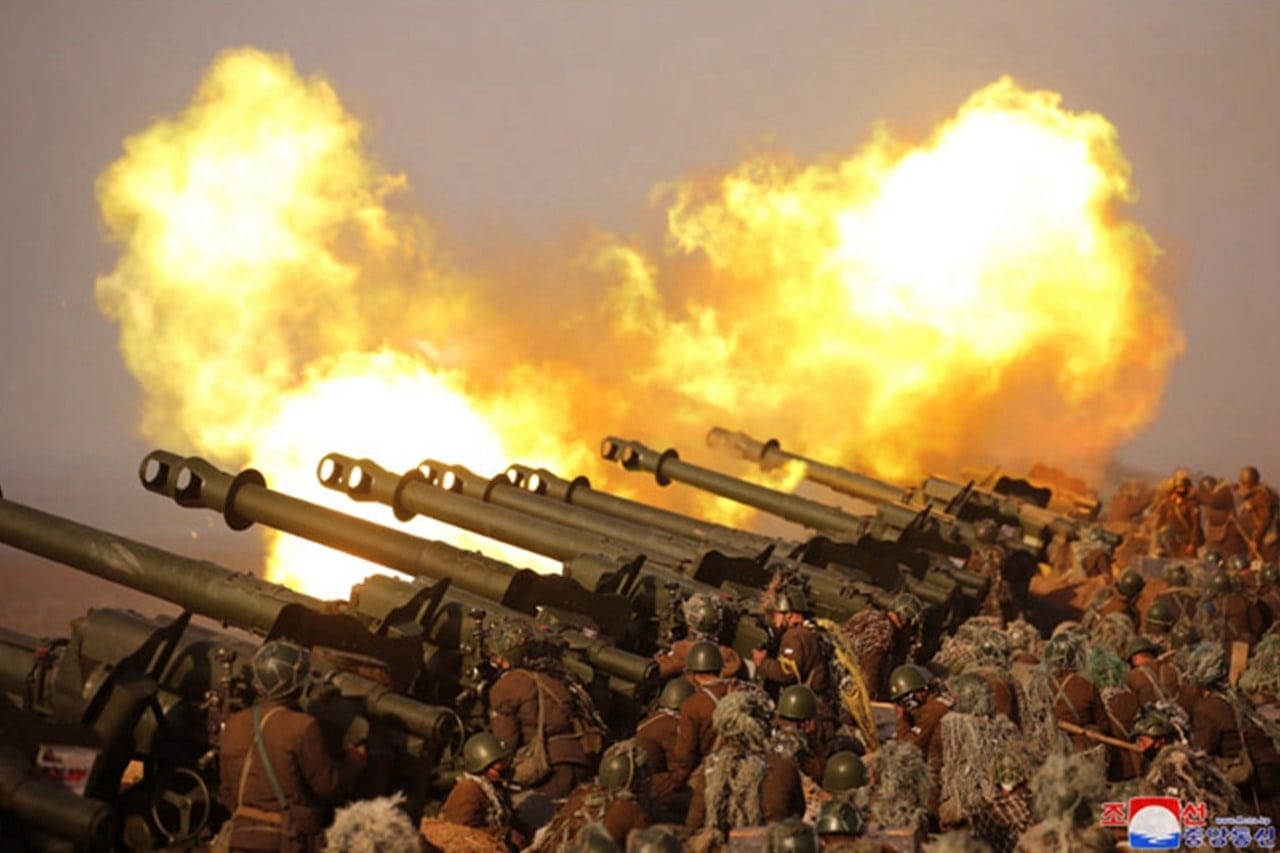Summary and Key Points: North Korea has faced catastrophic losses among its troops fighting alongside Russia in Ukraine, with nearly 50 percent casualties reported.
-British intelligence estimates over 5,000 North Korean casualties, including one-third killed in action. Deployed initially near Kursk under Russian command, North Korean forces, disguised with forged documents, engaged in costly mass infantry assaults known as “meat assaults.”
-Pyongyang has dispatched additional replacements despite high attrition.
-North Korean soldiers primarily serve as a diversion, absorbing heavy losses to enable subsequent Russian attacks on Ukrainian positions. Any further troop deployments into Ukrainian territory would likely require direct approval from Kim Jong Un and Vladimir Putin.
North Korea Has Suffered Staggering Losses in the Ukraine War
British intelligence reported that as of March this year, troops from the Democratic People’s Republic of Korea who were sent to fight against the Ukrainian Armed Forces have suffered nearly 50 percent losses in the field. It is estimated that these North Korean units had “highly likely sustained over 5,000 casualties in offensive combat operations against Ukrainian forces in the Russian oblast of Kursk.”
The British report adds that approximately one-third of the North Korean casualties are troops that have been killed in action. Reports out of Ukraine have confirmed that the force Pyongyang dispatched to fight alongside Russian units totals between 10,000 and 12,000 men, organized in five infantry brigades.
These North Korean soldiers were initially shipped out to Vladivostok, where they received basic combat training. They were then transported by air more than 7,000 kilometers to the outskirts of Kursk. Once there, they were placed under Russian military command and issued Russian uniforms and equipment.
The North Korean troops were also provided forged identity documents listing their origin and place of birth as the Russian region of Tuva. This was done to conceal any evidence that the DPRK was directly involved in the war. These troops are reported to be supported by an estimated 500 officers and three North Korean generals, including Kim Yong Bok, who is commanding a unit of 1,500 men from the special operations forces of the People’s Army of Korea.
The participation of these special-forces formations was reported by Ukrainian military intelligence but has also been confirmed by the South Korean National Intelligence Service.
Follow-On Operations
Since approximately half of the 11,000 North Korean troops initially deployed to the Kursk region have ended up killed or wounded, the Kim Jong Un regime has since dispatched what are described as “limited numbers” of additional troops to as replacements.
These North Korean units, operating in concert with Russian forces, have made territorial gains in recent weeks through sustained offensive operations against Ukrainian positions in Russia’s Kursk region. Ukrainian forces are reported to retain what is described as a mere foothold in the Kursk Oblast, but the cost to the North Korean units of this territorial push has been inordinately high.
The high casualty rates suffered by DPRK personnel have almost certainly been a consequence of the by-now standard Russian tactic of what are euphemistically referred to as “meat assaults.” These are massed attacks—described by the British Ministry as “highly attritional dismounted assaults”—in which individual troops leave the relative safety of their armored personnel carriers and infantry fighting vehicles and move forward solely on foot.
Used As A Diversion
The use of North Korean personnel has thus far been restricted to the Kursk region, which is officially Russian territory and not part of Ukraine proper. It is assessed that any deployment of these units into what is under Russian control, but still internationally recognised as sovereign Ukrainian territory, would require an agreement between and orders from both Russian President Vladimir Putin, and North Korean leader Kim Jong Un.
The North Korean units deployed in Kursk have been utilized as something of a diversionary force in battlefield operations. The pattern to date is that the North Korean forces are sent forward in an almost continuous string of one assault after another.
This tactic keeps Ukrainian forces engaged, allowing the Russians to hang back and watch for any weak points in the Ukrainian lines to be exposed. They then will send Russian units into the fray, and these can supply additional combat power to critical areas of the front.
The first North Korean attack on Ukrainian lines is estimated to have occurred on Nov. 4. This the date when combat units from Pyongyang were first revealed to have been transported to a location near Vladivostok. It confirmed Western intelligence reports from August 2 stating that North Korea would soon send troops to support Russian military operations.
About the Author: Reuben F. Johnson
Reuben F. Johnson is a survivor of the February 2022 Russian invasion of Ukraine and is now an Expert on Foreign Military Affairs with the Fundacja im. Kazimierza Pułaskiego in Warsaw. He has been a consultant to the Pentagon, several NATO governments and the Australian government in the fields of defense technology and weapon systems design. Over the past 30 years he has resided in and reported from Russia, Ukraine, Poland, Brazil, the People’s Republic of China and Australia.

